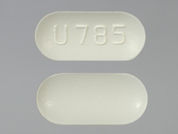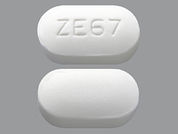Glipizide-Metformin
Glipizide/Metformin Hcl
What is Glipizide-Metformin used for?
This diabetes medication is a combination of 2 drugs (glipizide and metformin). It is used along with a diet and exercise program to control high blood sugar in patients with type 2 diabetes. Glipizide is a sulfonylurea and works by stimulating the release of your body's natural insulin and by decreasing the amount of sugar that your liver makes. Metformin is a biguanide and works by decreasing the amount of sugar that your liver makes and that your stomach/intestines absorb. Both of these medications work by helping to restore your body's proper response to the insulin you naturally produce. Controlling high blood sugar helps prevent kidney damage, blindness, nerve problems, loss of limbs, and sexual function problems. Proper control of diabetes may also lessen your risk of a heart attack or stroke.
CHEMICAL NAME
DRUG TYPE
DiabetesGlipizide-Metformin Prices
Searching for the lowest prices
What does Glipizide-Metformin look like?
View all Glipizide-Metformin Image Information (9)Glipizide-Metformin Frequently Asked Questions
If someone has overdosed and has serious symptoms such as passing out or trouble breathing, call 911. Otherwise, call a poison control center right away. US residents can call 1-800-222-1222. Canada residents can call 1-844-764-7669. Overdose can cause lactic acidosis and low blood sugar. Symptoms of overdose may include: rapid breathing, severe drowsiness, slow/irregular heartbeat.
IMPORTANT: HOW TO USE THIS INFORMATION: This is a summary and does NOT have all possible information about this product. This information does not assure that this product is safe, effective, or appropriate for you. This information is not individual medical advice and does not substitute for the advice of your health care professional. Always ask your health care professional for complete information about this product and your specific health needs.



